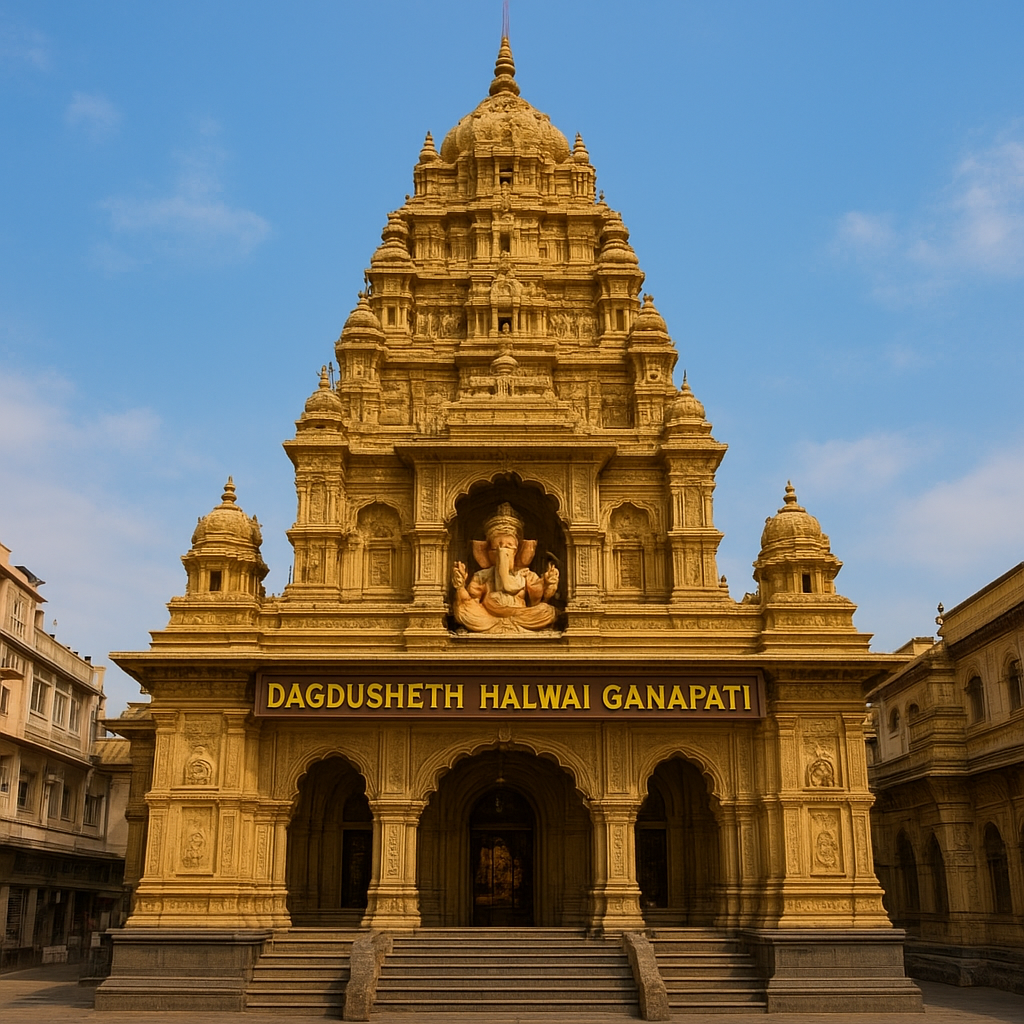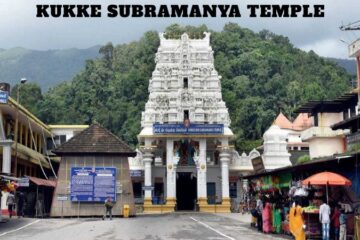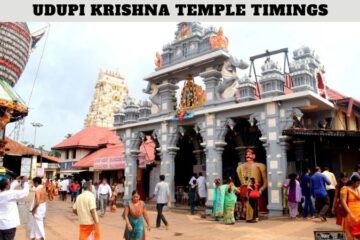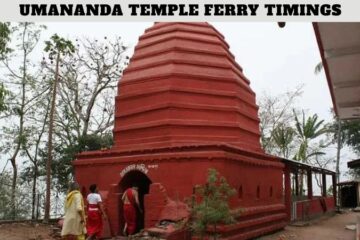
Table of Contents
We invite you on a spiritual and cultural journey to the Dagadusheth Halwai Ganapati Temple, one of Maharashtra’s most venerated Ganesh shrines. Situated in the heart of Pune, this temple attracts devotees, tourists, and spiritual seekers year-round. Its blend of deep-rooted tradition, philanthropic heritage, and vibrant celebrations makes it a focal point of devotion and cultural identity.
Historical Origins & Legacy
The Founder: Dagdu Sheth Halwai
The temple traces its origin to the late 19th century, named after Dagdusheth Halwai, a philanthropist and sweet‐maker from Pune. He and his wife had lost their only son, and in his memory, Dagdusheth installed an idol of Lord Ganesha. Over time, devotees began contributing to the temple’s upkeep and expansion, and the shrine evolved into a major religious and social institution.
Evolution and Expansion
From a modest beginning in 1893, the temple underwent expansions and renovations across generations, especially in the early 20th century. The trust established by the Halwai family administered the temple, channeling funds into charitable and educational activities. Over the decades, it became a major landmark in Pune, both for worship and civic engagement.
Sacred Significance & Spiritual Appeal
Why Devotees Visit?
The Dagadusheth Halwai Ganapati Temple is believed to bestow blessings, prosperity, and removal of obstacles. Many devotees come seeking success in careers, education, relationships, and spiritual solace. The fame of the deity’s benevolence spreads far and wide, drawing people from across India and abroad.
Philanthropy & Community Service
The temple is not only a place of worship but also an institution of social welfare. It runs various schemes—educational scholarships, medical camps, disaster relief—which enhances its reputation as a temple with a heart. Devotees often consider contribution to the temple’s social causes as part of their pilgrimage.
Architectural Features & Temple Layout
Design and Aesthetic Highlights
The temple blends traditional Maharashtrian and Hindu temple architectural elements. The sanctum (garbhagriha) houses the iconic Ganesha idol, richly decorated with gold and jewels donated by devotees. Intricate carvings, arches, latticework, and decorative pillars enrich the temple halls.
Mandap, Sabha Mandir & Courtyards
Beyond the main shrine, there is a sabha mandap (assembly hall) for events, religious discourses, and gatherings. The courtyards facilitate large crowd movement during major festivals. The surroundings are clean, landscaped, and managed with efficient crowd control measures.
Illumination and Decorations
During festival times like Ganesh Chaturthi, the temple is adorned with elaborate lighting, floral motifs, decorative panels, and thematic installations. The illuminated façade becomes a visual spectacle in Pune.
Major Festivals & Celebrations
Ganesh Chaturthi at Dagadusheth
The Ganesh Chaturthi celebration here is legendary. The idol is installed with great fanfare, and for 10 days, thousands of devotees throng daily. The “Palkhi procession”, cultural programs, mass prayers, and Aarati events mark each day. On the last day, the Visarjan (immersion) is carried out with immense devotion and grandeur.
Other Rituals & Observances
Sankashti Chaturthi: Monthly observance with special worship
Friday Prayers: Many devotees consider Friday auspicious for Lord Ganesha
Annadan & Prasad: The temple regularly offers food distribution and prasadam to devotees
These repeat rituals reinforce devotional bonds and community participation.
Visitor Information & Practical Tips
Location & Reachability
The Dagadusheth Halwai Ganapati Temple is located in Budhwar Peth, central Pune. It is well-connected by road, local buses, auto-rickshaws, and taxis. The nearest railway station and bus terminal are within reasonable distance.
Opening Hours & Darshan Timings
The temple opens early in the morning (around 6:00 AM) and continues through the day, with occasional breaks for rituals. Evening timings extend till late hours (around 9:30–10:00 PM). Confirm exact timings before visiting—especially during festivals.
Darshan and Queue Management
Because of heavy footfall, the temple uses well-organized queues, separate lines for VIP darshan, and crowd control staff. On regular days, darshan can be smooth, but during festivals, expect long waiting times.
Dress Code & Etiquette
Visitors are expected to dress modestly. Removing Shoes is mandatory before entering the inner sanctum. Photography may be restricted in certain areas—always follow temple signage or staff instructions. Maintain silence, respect fellow pilgrims, and follow queue discipline.
Best Time to Visit
Non-festival days are ideal to avoid crowds
Early mornings or late evenings offer more peaceful darshan
Avoid peak tourist season or festival climax days if you prefer minimal congestion
Nearby Attractions
While in Pune, visitors can also explore Shaniwar Wada, Raja Dinkar Kelkar Museum, Aga Khan Palace, and Pataleshwar Cave Temple—all within reachable distance from the Dagdusheth temple.
Spiritual Practices & Rituals Inside
Daily Pujas & Aartis
Multiple daily pujas (morning, noon, evening) are performed by priests with devotion and traditional Vedic chants. Aarti times, especially evening aarti, are spectacular with synchronized music, lamps, and synchronized offerings.
Special Sevas & Homas
Devotees can book special sevas (services)—such as Abhishek, Rudrabhishek, Shej Aarti, Mangal Aarti—in advance. These rituals are more elaborate, accompanied by priests, priests chanting Vedas, and offerings.
Offerings and Votive Traditions
It is common for devotees to offer modaks, laddus, flowers, coconuts, or valuables like gold and silver as votive offerings in gratitude. Many also submit vows (mannat) promising to visit again or donate in return for granted wishes.
Cultural & Social Impact
Symbol of Pune’s Identity
The Dagadusheth temple is almost synonymous with Pune’s cultural and spiritual identity. Its presence in media, literature, and public consciousness gives it an aura beyond a local temple—many see it as a city icon.
Community Engagement
The temple trust actively engages in community programs, education, health camps, disaster relief, and interactions with civic institutions. In times of crisis, the trust contributes famously to social welfare.
Tourism & Economy
This temple draws large numbers of domestic and international visitors, supporting local businesses—hotels, eateries, guides, shops selling religious souvenirs—all benefiting from the footfall generated.
Tips to Plan Your Visit to Dagadusheth Halwai Ganapati Temple
Check Dates in Advance: Avoid festival peaks unless you are there for the festival experience.
Pre-book Special Sevas: For ritual darshans, reserve in advance if possible.
Arrive Early or Late: To avoid crowds, aim for first or last darshan slots.
Stay Nearby: Book hotels in Pune Central (like near Shaniwar Wada or Budhwar Peth) for easy access.
Respect Temple Norms: Modest clothing, shoe removal, no loud talk, obey signage.
Carry Essentials: Water bottle, hat (in summer), minimal luggage, camera (if allowed).
Combine Nearby Sightseeing: Leverage your visit to explore Pune’s heritage spots on the same day.
Conclusion
The Dagadusheth Halwai Ganapati Temple stands as a tangible manifestation of faith, cultural heritage, and community spirit. From its humble beginnings to becoming an indispensable part of Pune’s spiritual fabric, the temple continues to inspire devotion and social welfare. Our deeply researched guide ensures you are well equipped to experience the sanctity, beauty, and traditions of this magnificent shrine.
Frequently Asked Questions (FAQs)
1. Where is Dagadusheth Halwai Ganapati Temple located?
Ans. The Dagadusheth Halwai Ganapati Temple is located in Budhwar Peth, Pune, Maharashtra, near Shaniwar Wada. It is one of the most famous Ganesh temples in India.
2. Who built the Dagadusheth Halwai Ganapati Temple?
Ans. The temple was built by Dagdusheth Halwai, a sweet maker and philanthropist, in the late 19th century after the death of his son.
3. What is the main deity of Dagadusheth Halwai Ganapati Temple?
Ans. The temple is dedicated to Lord Ganesha, the remover of obstacles and god of wisdom, prosperity, and good fortune.
4. What are the temple timings?
Ans. The temple usually opens around 6:00 AM and closes around 10:00 PM, but timings may vary during festivals or special events.
5. What is the best time to visit Dagadusheth Halwai Ganapati Temple?
Ans. The best time to visit is early morning or late evening on regular days. For festival lovers, visiting during Ganesh Chaturthi offers an unforgettable experience, though it attracts large crowds.
6. Is photography allowed inside the temple?
Ans. Photography is generally restricted near the main sanctum, but you may take pictures outside or in designated areas. Always check with temple authorities.
7. What are the main festivals celebrated at the temple?
Ans. The most important festival is Ganesh Chaturthi, celebrated with great devotion and grandeur. Other events include Sankashti Chaturthi and special Friday prayers.
8. How can I reach Dagadusheth Halwai Ganapati Temple?
Ans. The temple is well-connected by road, rail, and air. Pune Junction Railway Station is about 2 km away, and Pune International Airport is around 12 km from the temple.
9. Are there any special rituals or sevas available?
Ans. Yes, devotees can book special sevas such as Abhishek, Aarti, and Archana. These can be reserved in advance through the temple office.
10. Does the temple offer any social or charitable services?
Ans. Yes, the Dagadusheth Halwai Ganapati Temple Trust runs several educational, medical, and welfare programs for underprivileged communities, continuing the philanthropic legacy of its founder.


